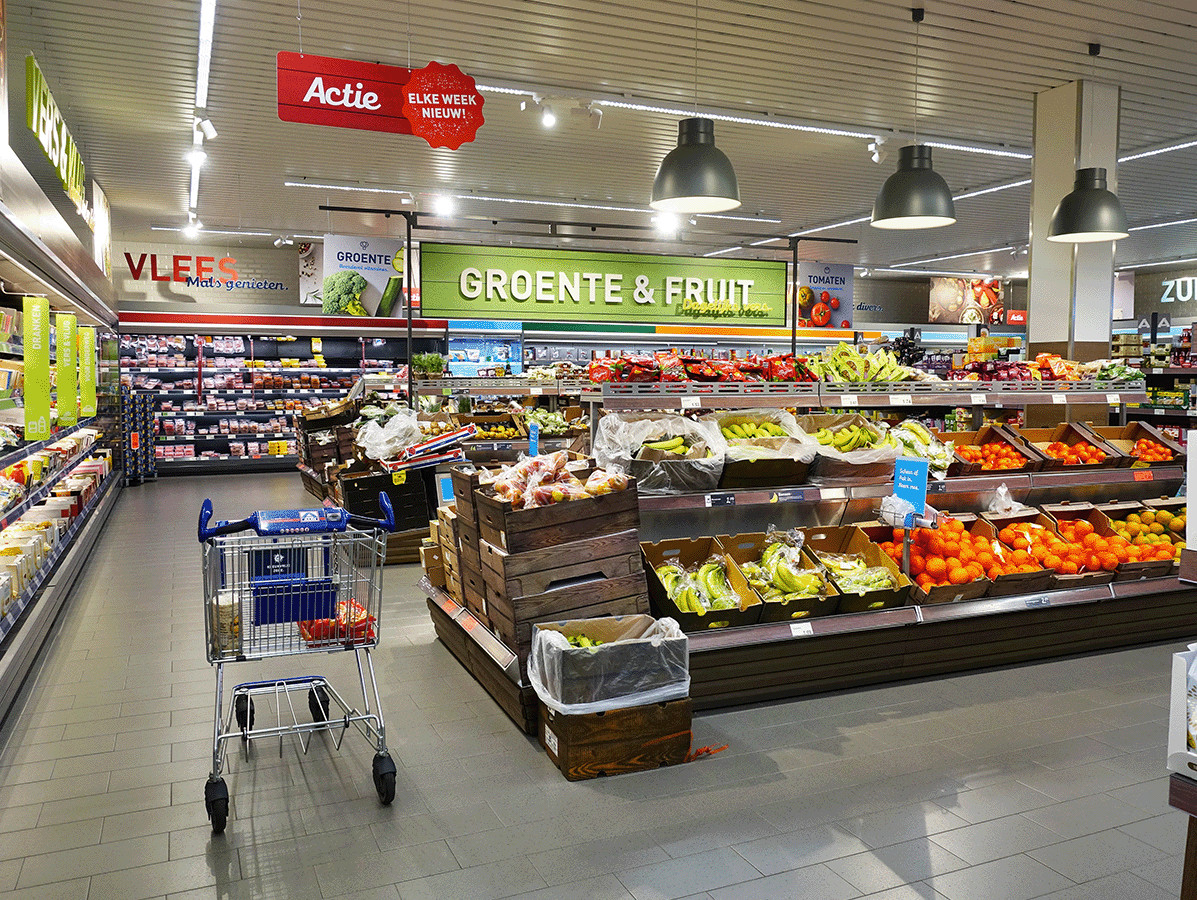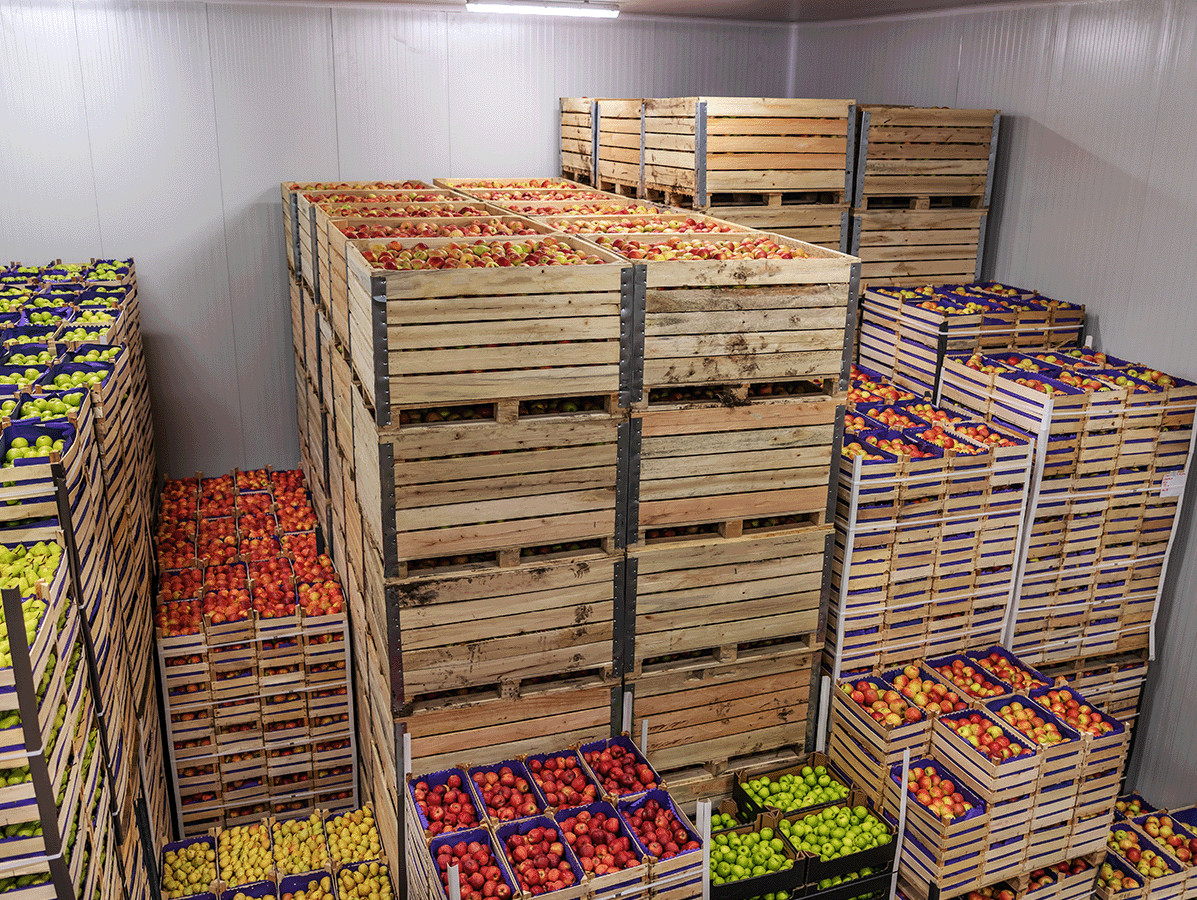
New building and renovation of refrigeration systems offers users the opportunity to reformulate product (quality) requirements and apply energy optimisation; for example, by using the system data that will become available in the new generation of controllers. From system information to saving energy.
Correct conditioning of fresh products such as vegetables, fruit and flowers is essential to prevent waste. This process begins immediately after the harvest and continues in every step of the chain. Everything revolves around maintaining the quality of the fresh product and preventing loss.
There are plenty of challenges in this sector, and even more questions from chain partners. How do you use the right kind of conditioning to maintain quality and prevent product loss? Can you use new technologies to save on energy costs? Can maximum quality preservation be combined with low energy consumption of installations, or with systems that are easier to use?
Fruit, vegetables and flowers produce CO2 and other volatile substances, including ethylene. Above a certain limit value, controlled air exchange is therefore necessary. How do you do that in the most energy-friendly way? You need to take that into consideration at an early stage in the building design. Moreover, not every product is the same. The type of products you store and cool has major consequences for your design. Sometimes super-fast handling is essential, like for soft fruit or fresh lettuce, while other products - like apples and pears - require a long storage period.
In general, the fresh produce chain requires handling that is as closed off as possible and temperature-controlled. In an energy-friendly cold store, all efforts are made to limit the temperature exchange between the indoor and outdoor areas. But you cannot avoid switching between the various steps in the chain. This nearly always has an impact on the storage conditions, and therefore on the quality of the products. Sometimes you have to accept that there are 'gaps', which you then compensate with better treatment at another time if possible. Some fresh products are stored in the shop in refrigerated display cabinets, but the bulk of the fruit and vegetables are stored unrefrigerated. Only a quick processing time preserves the quality. The knowledge that the last link in the chain is unrefrigerated demands even more effort from the earlier chain partners, for example by using smart packaging techniques.
A team of fresh produce specialists from the Business Unit 'Fresh Food and Chains' of Wageningen Food & Biobased Research (WFBR) focuses, among other things, on providing advice in support of structural investments (national and international) in the fresh produce chain. In applied scientific research within the categories of vegetables, (tropical) fruits and flowers, the researchers focus, in particular, on innovative packaging and storage systems, and on logistic optimisation - with a emphasis on preserving product quality. By taking the product quality in a specific chain, or part of a chain, as their starting point, they determine the most appropriate conditioning technique and its use. The specialists at WFBR know the desired conditioning for almost all products, and the challenges in the fresh produce chain.
For example, they now know that the electricity consumption of a cooled cubic metre of air can vary by a factor of 3 or more between companies as a function conditioning of fresh product. Designs where all sources of heat are minimised, and where high-efficiency installations are used, are beneficial.
Suppliers sometimes propose investments that, in our opinion, have no added value in specific chains. For example, air purification techniques that may reduce the fungi and bacteria present in the air, but do little or nothing to tackle the source. Or a technique for rapid product cooling in a chain that is so short that no cooling is needed at all. We often trigger suppliers to establish a result agreement, for example, a level of energy consumption, equality in climate or a degree of moisture extraction.

Recent innovations focus on conditioning based on product signals. Sensors and data make it possible to condition in an increasingly efficient and energy-friendly way. Standard conditions make way for refined control. Tested model calculations make it possible to better substantiate technical choices. An example is the use of CFD (Computational Fluid Dynamics) to determine, prior to the investment, what air circulation and sizing will lead to an operationally and economically most favourable result.
It is also relevant to ask about the stability of your systems. The more turbulent the engine room, the higher the electricity consumption. Here too, data plays a major role. All too often, a certain setting is chosen based on habit or outdated experience. And in a great many cooling systems, the reaction to temperature changes is too alert. By giving them a little more time, systems get more peace of mind. We regularly find that the lowest electricity consumption results in the best quality. In many cases, the use of the correct measurement methods can help to choose a more energy-friendly setting, responsibly and with proper argumentation.
Many fruit and vegetable products lose moisture in the chain. Moisture loss is weight loss. Every chain partner tries to limit this loss with conditioning techniques, supplemented with packaging technology. Proper moisture control requires a strict balance between product, technology and operator. Each fresh product has its own specific requirements and limits. Within those limits, you have to find the right technology. An environment that is too dry often causes not only weight loss, but also quality loss. Fruit starts to wrinkle or becomes soft. An environment that is too wet encourages fungi to develop or leads to physiological abnormalities. Think of the brown colouring of French beans, the grey colouring of bananas or the internal brown colouring of apples.
Controlling a uniform moisture loss in a cold store full of product is technically challenging. Even within product categories, one must differentiate, because not every berry or apple requires the same treatment. With smart measuring techniques, we are now even able to give specific batches their own 'best condition'. It is expected that camera technology, for example, will increasingly be used to choose a specific storage condition strategy
Moisture loss management plays a role primarily in chain parts where there is more control and time to realise a balanced conditioning; such as the months-long storage of apples, pears and even berries. With CFD techniques, the distribution of temperature and humidity can be mapped out prior to the investment, and then tested whether this distribution falls within the standards. This is highly desirable, particularly in the case of deviating dimensions of cold store rooms, as it is no longer possible to rely on experience.
Smart insulation minimises external influences. In specific cases, where excluding external influences pays off in terms of quality and energy (e.g. long-term storage of pears), a 'box-in-box' insulation system is chosen. Here, cooled cells are placed in a conditioned building. All external heat radiation, including the impact of this heat on the applied storage technology, is neutralised in the outer box. Of course, this demands energy for the outer box, but it yields greater savings for the inner box; both in product quality and in kWh.
In recent years, a large part of the fresh produce chain has been equipped with increasingly sustainable refrigeration plants. Whereas synthetic refrigerants (freons) were previously chosen for cost reasons, natural refrigerants are now mainly used in new buildings. However, there is still a long way to go for the replacement of existing synthetic refrigeration systems, both in production companies with refrigeration and in service providers, trading companies, transporters and distribution centres.
If you are going to renew or renovate your cooling system, don't just look at the investment now. When making your choice, also consider the expected costs for future maintenance and energy consumption, and more importantly: the effect on the process and on the quality of your product.
Photo supermarket: ©Dusan Petkovic/Shutterstock.com, photo crates: ©Defotoberg/Shutterstock.com
Source: Vakblad Voedingsindustrie 2022